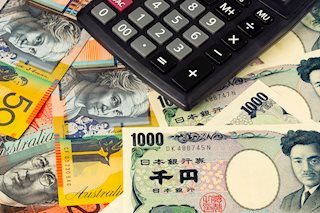AUD/JPY Price Analysis: Remains depressed near mid-97.00s, lowest level since March 12
|
- AUD/JPY drifts lower for the third straight day and dives to a fresh multi-month low.
- The post-BoJ JPY strength and China’s economic woes exert pressure on spot prices.
- The oversold RSI warrants some caution for bears and positioning for further losses.
The AUD/JPY cross remains under some selling pressure for the third successive day on Thursday and drops to its lowest level since March 12, around the 97.20 region during the Asian session. Spot prices, however, manage to rebound a few pips and currently trade just above mid-97.00s, though any meaningful recovery still seems elusive.
The Japanese Yen (JPY) continues to draw support from the Bank of Japan's (BoJ) decision to hike the benchmark short-term rate on Wednesday, by 15 basis points - the top end of market expectations. Moreover, official data showed that Japanese authorities spent ¥5.53 trillion ($36.8 billion) intervening in the foreign exchange market in July, which is seen as another factor underpinning the JPY and exerting pressure on the AUD/JPY cross.
Meanwhile, a private survey showed that business activity in China's manufacturing sector unexpectedly shrank in July for the first time in nine months, underscoring economic woes. Furthermore, Australian consumer inflation figures released on Wednesday dashed hopes for further rate hikes by the Reserve Bank of Australia (RBA) and weighed on the Australian Dollar (AUD), validating the negative outlook for the AUD/JPY cross.
From a technical perspective, the overnight convincing breakdown through the very important 200-day Simple Moving Average (SMA) and a subsequent fall below the 99.00 mark was seen as a fresh trigger for bearish traders. That said, the Relative Strength Index (RSI) is flashing extremely oversold conditions on the daily chart and warrants caution before positioning for further losses amid the risk-on mood, which tends to dent demand for the safe-haven JPY.
Any attempted recovery, however, now seems to face some resistance near the 77.75-77.80 region ahead of the 78.00 mark. Some follow-through buying might prompt some short-covering move and lift the AUD/JPY cross to the 98.60 intermediate hurdle en route to the 99.00 round figure. The momentum could extend further, though is likely to remain capped near the 200-day SMA support breakpoint, currently pegged just below the 100.00 psychological mark.
On the flip side, the Asian session low, around the 97.20 area, could act as an immediate support ahead of the 97.00 round figure. A convincing break below the latter has the potential to drag the AUD/JPY cross to the next relevant support near the 96.65 region en route to the 96.00 mark and the YTD low, around mid-95.00s, touched in February.
AUD/JPY daily chart
Bank of Japan FAQs
The Bank of Japan (BoJ) is the Japanese central bank, which sets monetary policy in the country. Its mandate is to issue banknotes and carry out currency and monetary control to ensure price stability, which means an inflation target of around 2%.
The Bank of Japan has embarked in an ultra-loose monetary policy since 2013 in order to stimulate the economy and fuel inflation amid a low-inflationary environment. The bank’s policy is based on Quantitative and Qualitative Easing (QQE), or printing notes to buy assets such as government or corporate bonds to provide liquidity. In 2016, the bank doubled down on its strategy and further loosened policy by first introducing negative interest rates and then directly controlling the yield of its 10-year government bonds.
The Bank’s massive stimulus has caused the Yen to depreciate against its main currency peers. This process has exacerbated more recently due to an increasing policy divergence between the Bank of Japan and other main central banks, which have opted to increase interest rates sharply to fight decades-high levels of inflation. The BoJ’s policy of holding down rates has led to a widening differential with other currencies, dragging down the value of the Yen.
A weaker Yen and the spike in global energy prices have led to an increase in Japanese inflation, which has exceeded the BoJ’s 2% target. With wage inflation becoming a cause of concern, the BoJ looks to move away from ultra loose policy, while trying to avoid slowing the activity too much.
Information on these pages contains forward-looking statements that involve risks and uncertainties. Markets and instruments profiled on this page are for informational purposes only and should not in any way come across as a recommendation to buy or sell in these assets. You should do your own thorough research before making any investment decisions. FXStreet does not in any way guarantee that this information is free from mistakes, errors, or material misstatements. It also does not guarantee that this information is of a timely nature. Investing in Open Markets involves a great deal of risk, including the loss of all or a portion of your investment, as well as emotional distress. All risks, losses and costs associated with investing, including total loss of principal, are your responsibility. The views and opinions expressed in this article are those of the authors and do not necessarily reflect the official policy or position of FXStreet nor its advertisers.
